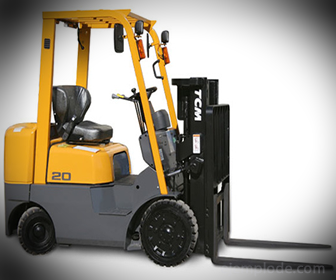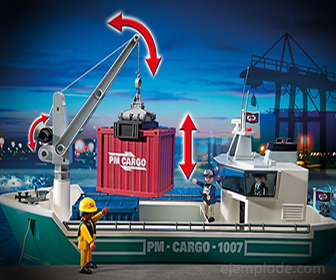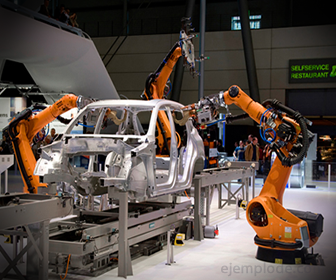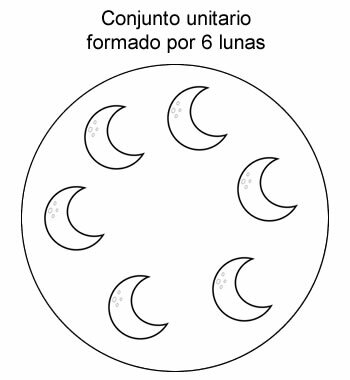Mechanical Work Example
Physics / / July 04, 2021
The mechanical work has been defined as the action of a Force of constant value over a Distance. It is usually illustrated by showing a person moving a body from one point to another on the horizontal.
The Work is the physical magnitude which results from the multiplication of the Force applied over the entire Distance, having as units the Newton-meter or Joules, for the International System of Measurements SI. One Joule is the work done with a Force of 1 Newton along 1 meter.
Work is a scalar quantity that is generally represented by the letter W, alluding to the English word “Work”.
Its calculation is expressed as follows:
 If the applied Force is observed as the resultant of a system of Forces, it is possible to discover the smaller forces that are involved. For example, when lifting a load with a pulley, the Load Weight and the Cable Tension of the pulley act as Forces. The result between the two will determine if the load remains static or begins to rise. What you do at the end is multiply by the offset distance.
If the applied Force is observed as the resultant of a system of Forces, it is possible to discover the smaller forces that are involved. For example, when lifting a load with a pulley, the Load Weight and the Cable Tension of the pulley act as Forces. The result between the two will determine if the load remains static or begins to rise. What you do at the end is multiply by the offset distance.
If the mechanical work is carried out in favor of a movement already established in the body, it is taken as positive and is added to the work that is already affecting it, generating a greater total work.
If the mechanical work is done against the movement of the body, it is taken as negative and is opposed to the work that already affects the body, generating a minor resultant work invading the body.
Mechanical Work Applied with an Angle of Inclination
There are cases in which the force to displace the object is not being applied horizontally, synchronized with the movement, but at an angle with respect to the plane. This means that the Force being exerted acts with a vertical component and with a horizontal component.
In the horizontal displacement of the body, the vertical component is not considered because the object is not rising in the air, but only moving horizontally, so we only proceed to calculate the Force that is really generating the movement.
To calculate the Force that interests us, we multiply the Force applied by the Cosine of the angle. In this way the Force is translated into the correct Direction of movement.

So, applying this equality to the calculation of Mechanical Work, the new formula would be:

Mechanical Work in Thermodynamics
To better understand the Thermodynamic context of Mechanical Work, it is necessary to define the Closed System. A closed system is a container with a defined volume and in which there is no exchange of matter with the outside. There is only exchange of energy and work through the boundary or edge of the system.
In Thermodynamics, mechanical work is used in closed systems, either as a support or consequence of the phenomenon that occurs inside them.
A cylinder-piston system will be used as an example. If a gas is enclosed in a Cylinder-Piston system, and the Temperature or Pressure is varied, the gas particles They will respond to this change within the container, grouping or dispersing to a greater extent, generating a variation in the volume understood.
This phenomenon of expansion or compression is manifested even more clearly when a chemical reaction occurs. whose stoichiometry implies a change in volume, from reactants to products, such as combustion.
The internal combustion engine is the clearest example of the application of mechanical work obtained by a chemical reaction in a closed thermodynamic system.
The parameters with which the Work in a Closed Thermodynamic System is calculated is given by the following expression:
 The above equation calculates the Work, multiplying the System Pressure by the Volume Change. For infinitesimal changes, we have the differential expression:
The above equation calculates the Work, multiplying the System Pressure by the Volume Change. For infinitesimal changes, we have the differential expression:
 And the expression between the initial and final volumes V1 and V2 is integrated.
And the expression between the initial and final volumes V1 and V2 is integrated.
 There are two cases in which the equation can be integrated:
There are two cases in which the equation can be integrated:
First case: The pressure is constant in the system, so only its numerical value is placed to the left of the integration symbol, and only the differential dV is integrated.
Second case: Pressure is a function of the volume P = Φ (V), which is inserted between the integration symbol and the differential, and its integration is carried out, term by term, between the limits V1 and V2, until reaching the value numerical of W.
Moving a pallet with a forklift involves vertical mechanical work to lift it, and horizontal to bring it to its place.

In an internal combustion engine, the reaction of gasoline with the spark from the spark plug and air generates a expansion in the piston that provides mechanical work, which will be subsequently communicated to the crankshaft and the tires.
In commercial ports, where there are numerous large metal boxes, cranes are used to move them. First, the crane pulley is hooked to the box; it rises in the air at a moderate speed, and at the end it moves horizontally to deposit it in its place on the ship where it is to be transported.

In thermoelectric plants, the steam generated by the boiler drives the turbines, which communicate the mechanical work to the generators to produce the electrical energy.
The mechatronic arms that are operating in the automotive assemblers, apply mechanical work to the parts, to transport them and accommodate them in their design site.

A somewhat more abstract mechanical work is that which generates the wind against the sails of a ship to move it above the water. That is why the sails are strategically arranged, to make the most of the work that the moving air can bring.
In the construction industry, trascabos are in charge of applying mechanical work to the raw material, be it sand, cement, lime. First, as much as possible is collected in the bucket, then transported and finally deposited where it will be used. They are between three and four mechanical work processes.

